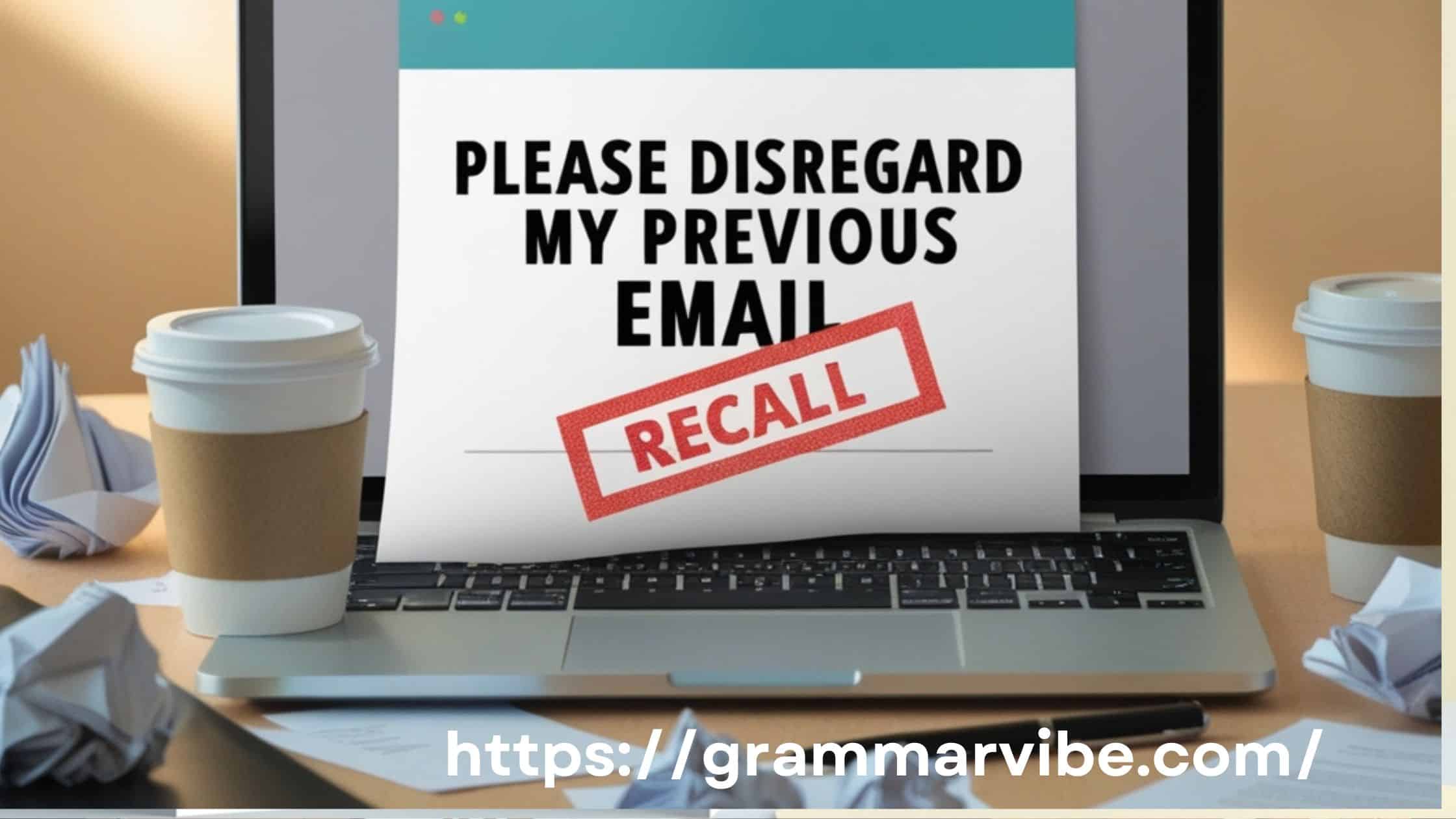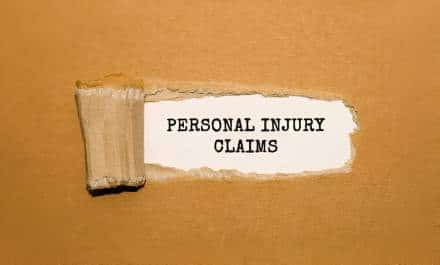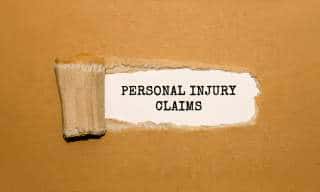In the professional world, emailing is a primary mode of communication. However, mistakes are common, whether due to inaccurate details, outdated information, or simply sending a message before it’s finalized. When this happens, it’s essential to correct the communication error professionally, avoiding potential confusion and maintaining a courteous tone.
We will provide you with thoughtful alternatives to the phrase “Please disregard my previous email,” paired with examples to help ensure clarity and professionalism in your email corrections.
Why We Need Alternatives to “Please Disregard My Previous Email”
Using varied phrases helps achieve a number of goals:
- Politeness and Professionalism: It reflects respect and accountability.
- Clarity in Communication: Clear language ensures that the recipient understands exactly what to disregard.
- Avoiding Overused Language: Using alternatives keeps the message fresh and attentive to detail.
1. Disregard My Previous Communication
This phrase provides a straightforward way to ask recipients to ignore the initial message, perfect for professional settings where clarity is essential.
Example:
Subject: Update on Project Deadlines
Dear Sarah,
Please disregard my previous communication regarding the project timeline. The accurate schedule is provided in this email. I apologize for any confusion this may have caused.
Best,
John
2. Ignore My Last Message
If you need a more conversational yet polite tone, “Ignore my last message” is suitable. This phrase is ideal when the error is minor and your email culture allows for a relaxed language.
Example:
Subject: Change in Meeting Time
Hi Team,
Please ignore my last message about the team meeting. The correct time is 3 PM, not 2 PM.
Thanks for understanding,
Kelly
More for you: Other Ways to Say “Looking Forward to Working With You”
3. Disregard Earlier Message

For situations requiring more formality, “Disregard my earlier message” communicates a clear request to ignore the previous email. This wording works well for both internal and external communications.
Example:
Subject: Policy Update Clarification
Dear Alex,
Please disregard my earlier message about the policy changes. The correct information is detailed below.
Kind regards,
Lily
4. Consider Previous Email Null and Void
If you need a formal way to communicate that an email is no longer relevant, “Consider previous email null and void” is a clear choice. It’s a phrase often used in official or external communications where maintaining a professional tone is essential.
Example:
Subject: Revised Product Specifications
Dear Mr. Brown,
Please consider my previous email null and void. The corrected specifications are attached here.
Warm regards,
Jane
5. Overlook My Last Message
“Overlook my last message” is a softer way of indicating that the last message should not be considered. It’s often suitable for colleagues and team environments.
Example:
Subject: Delivery Date Correction
Hi Jess,
Could you overlook my last message? I mistakenly mentioned the wrong delivery date. Here’s the correct schedule.
Thank you,
Sam
You might also like: Nicholas’ or Nicholas’s
6. Retract My Previous Email
In cases where sensitive or incorrect information was sent, “Retract my previous email” is a more official way to indicate the mistake. It’s direct and can be used in a variety of professional settings.
Example:
Subject: Retraction of Previous Budget Report
Dear Mark,
I’d like to retract my previous email regarding the budget report. Please disregard it as I’ll send the correct details soon.
Thank you,
Ana
7. Disregard My Initial Email
Sometimes an initial email needs to be ignored due to incomplete or incorrect information. “Disregard my initial email” acknowledges the mistake without a lengthy explanation.
Example:
Subject: Updated Policy Notice
Hello Team,
Please disregard my initial email about the policy changes. The accurate procedures are attached below.
Thanks for your attention,
Rob
8. Apologies for the Confusion
A simple apology can often be enough, especially for minor errors. This phrase is effective when you want to keep the tone polite but concise.
Example:
Subject: Meeting Agenda Revision
Hello Evelyn,
Apologies for the confusion caused by my last email. Here is the accurate agenda for tomorrow’s meeting.
Best,
Chris
Check out this: Kid’s or Kids’ or Kids
9. Null and Void Email
Declaring an email as “null and void” directly tells the reader that it no longer holds value or relevance. This can be used in situations that require a more official tone.
Example:
Subject: Revised Event Details
Dear Mr. Blake,
Please consider my previous email null and void. The updated event details are attached.
Sincerely,
David
10. Error in Previous Email
When there’s a clear mistake, acknowledging it with “error in previous email” maintains professionalism. It’s suitable for correcting factual inaccuracies.
Example:
Subject: Project Timeline Correction
Hi Claire,
There was an error in my previous email regarding the project timeline. Please disregard it and follow the information in this email.
Best,
Ryan
11. Corrected Email
If you plan to follow up immediately with correct information, simply saying “A corrected email follows” is straightforward and professional.
Example:
Subject: Product Specifications Update
Hello Tom,
A corrected email follows. Please disregard the previous message about product specifications.
Thank you,
Emma
12. Updated Information
Providing “updated information” and asking the recipient to ignore the old message is a diplomatic way to handle minor errors.
Example:
Subject: Updated Schedule Information
Dear Jenna,
Updated information is provided below. Kindly ignore the previous schedule I sent.
Kind regards,
Mason
For your interest: Other Ways to Say “Thank You for Your Effort”
13. Replace Previous Email with This One
This phrase clearly tells the reader that they should refer to the new information instead of the previous email. It’s a direct way to handle miscommunication.
Example:
Subject: Revised Meeting Agenda
Hi Lisa,
Please replace my previous email with this one as it contains the accurate agenda for the upcoming meeting.
Thank you for your understanding,
Jake
14. Follow-Up with Correct Details

If a small correction is needed, “following up with correct details” is often a sufficient way to convey the change.
Example:
Subject: Correct Meeting Time
Hi All,
I’m following up with the correct details. Kindly disregard my previous email with the incorrect meeting time.
Best,
Sophia
15. Kindly Disregard Previous Correspondence
“Kindly disregard previous correspondence” is another polite, formal way to ask for an email to be ignored. It’s especially useful in correspondence with clients or business partners.
Example:
Subject: Product Launch Update
Dear Andrew,
Kindly disregard the previous correspondence regarding the product launch details. This email contains the correct information.
Best regards,
Amy
Table of Alternatives
| Alternative Phrase | Example Usage |
|---|---|
| Disregard my previous communication | Please disregard my previous communication regarding the project timeline. |
| Ignore my last message | Kindly ignore my last message about the meeting location. |
| Disregard earlier message | Please disregard my earlier message about the event. |
| Consider previous email null and void | The last email should be considered null and void. Apologies for the confusion. |
| Overlook my last message | I request that you overlook my last message. It contains incorrect details. |
| Retract my previous email | I’d like to retract my previous email with incorrect information. |
| Disregard my initial email | Please disregard my initial email regarding the policy change. |
| Apologies for the confusion | Apologies for any confusion caused by my last email. |
| Null and void email | My previous email is null and void. Kindly ignore it. |
| Error in previous email | There was an error in my previous email. Please disregard it. |
| Corrected email | A corrected email follows. Please ignore the earlier message. |
| Updated information | Updated information is provided below. Kindly ignore the previous email. |
| Replace previous email with this one | Please replace my previous email with the information here. |
| Follow-up with correct details | I am following up with the correct details. Kindly disregard my previous email. |
| Kindly disregard previous correspondence | Kindly disregard the previous correspondence regarding the product launch. |
Conclusion
Mistakes in email communication are normal, but they can easily be managed with professional email etiquette. Using alternative phrases to “Please disregard my previous email” allows you to acknowledge mistakes in a courteous manner and communicate clearly with recipients.
With these alternative phrases, you can maintain a courteous and professional relationship in your email communication while effectively addressing any errors.

Kyren Paul is an experienced blogger and the creative mind behind “Grammar Vibe.” With a passion for the nuances of English grammar, he brings clarity and insight to everyday language topics, making grammar accessible and engaging for readers of all levels.











Leave a Comment